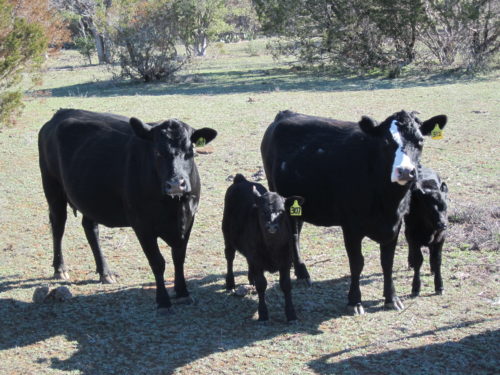Maternal Nutrition Influences Offspring Performance
Posted: March 24, 2022 | Written By: Dave Lahr, Form-A-Feed Nutrition Team Lead

Most cattle producers understand the importance of delivering the right amount of quality nutrients to cows. They balance for energy levels (body condition) and protein, and provide supplemental minerals and vitamins, recognizing that these are important for colostrum quality, delivering a healthy calf, milk production and reproductive performance.
However, not all are aware of the significant impact of gestational nutrition on calf growth and weaning weight, market weight, health of weaned and shipped calves, market weight and carcass characteristics, and even future generations of their stock. This brings us to the topic of fetal programming.
Fetal Programming
Fetal programming can be defined as the “impact of nutritional and health status of the mother during pregnancy and its impact on the health and productivity of the offspring” (Glenn Selk, OK State Univ., Emeritus Extension Scientist, June 22, 2021). It is not a new idea, but has been gaining significant credence in the past few decades. The concept is that maternal nutrition, health and environmental factors drive fetal development, and therefore future health and performance. We can think of this in a positive or negative sense, and we understand it intuitively, as we encourage human mothers to eat a healthy diet, get their rest, and avoid alcohol and tobacco for the sake of their developing children.
What is this “programming”, and how does it happen? When the information stored in our DNA is converted into instructions for making proteins or other molecules, it is called gene expression. Gene expression is a tightly regulated process that allows a cell to respond to its changing environment. It acts as an on/off switch to control when proteins are made, and as a volume control that increases or decreases the amounts of proteins made. This involves the processes of transcription and translation (DNA > mRNA > Protein Synthesis). Gestational nutrition and environment helps determine development of muscle cells (lean gain, loin area, etc), fat cells (marbling potential), testicles and egg follicles, all before birth. Therefore, it has a “downstream” influence on immune function, disease resistance, ADG and F/G, marbling, and reproductive performance.
Research
In a good demonstration of these effects, research was conducted by Oregon State University (Marques et al, 2016; Journal Animal Science). In this trial 84 Angus x Hereford cows were fed similar diets, but were fed different trace mineral programs in the last trimester (no trace minerals, NRC levels of sulfate trace minerals, or high trace minerals with organic trace minerals). After calving, the cow-calf pairs were managed as a common group. Calves were followed out through finishing.
The results:
Birth through weaning
- Calf livers had greater trace minerals if born to supplemented cows.
- 205 days adjusted weaning weight improved by organic trace mineral supplementation (537 vs 579 pounds).
Weaning through feed-out and harvest
- 50% less respiratory illness in calves from organic treatment.
- (Bovine respiratory disease treatments: 42% control vs 20% organic).
- Tendency (P = 0.10) for hot carcass weight to be different (901 control vs 943 lbs for organic).
Value
- For a few cents daily, calves weaned 42 lbs. heavier.
- Healthier at shipping to feedlot.
- Higher value for the feedlot operation (health and carcass wt).
Practical Application
So how do we deliver high quality nutrients to gestating cows? Start with a diet balanced for appropriate energy and protein levels, and feed a high quality mineral and vitamin supplement. Excellent options include:
- PowerPro Minerals option best-suited for your operation:
- Power Pro LGC Mineral
- Power Pro Bio-Mineral
- Form-A-Lic Tubs
- Bovine Stress Lic w/ Stealth 5
Consult your Form-A-Feed nutrition advisor about the best ration and supplementation options for your operation.